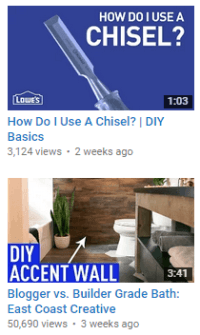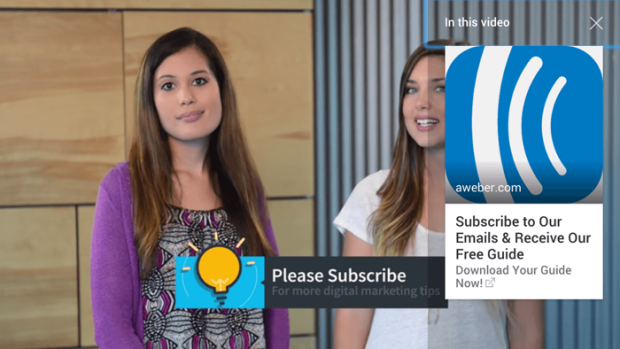Six out of 10 people prefer to watch videos online rather than surfing channels on the small screen. And YouTube is the second-largest search engine next to Google.
So it makes sense for brands to build their video presence on the platform. The only problem? It isn’t always simple to get views on the content that you put so much time and resources into.
Never fear—we have got some seriously smart and effective methods to advertise your YouTube channel to increase your views and enhance the ROI of your YouTube strategy.
How to promote your YouTube channel
1. Optimize your YouTube content so that it ranks in SEO
SEO (search engine optimization) is necessary for your YouTube profile, channel, and individual videos. That is what will make your content discoverable in search rankings.
YouTube’s algorithm takes multiple items into account when pulling videos for search outcomes, so include as much info as possible. Know what keywords you want to rank for and include them in video titles, descriptions, file names, annotations, tags, and relevant fields in your profile.
Unsure what keywords you want to rank for? Reverse engineer the search process. If somebody wanted what your YouTube videos offers—what words or phrases would they use in a Google search to find them?
Hootsuite wanted to rank for “how to use Hootsuite” (of course) and in the spring of 2017 made a video and optimized it for that phrase. As soon as it was published it began to climb the Google rankings, leapfrogging third-party videos that had years to build up views and backlinks.
Right here’s how they did it:
- They included the keyword in the title, meta description, and picture file
- The video description contains other keywords associated with using the Hootsuite dashboard
- They linked to the video on their blog and social channels
- They always encourage people to subscribe to their channel and those subscribers were notified when the video was uploading—which meant instant views
- They created keyword-rich playlists, which gave YouTube deeper information about our video’s topic and, as the platform says, “More text-based content equals more views”
2. Create great video titles
That is likely the first thing somebody will see wherever they find your video. The title has to be informative and attention-grabbing. Listed below are some greatest practices you need to consider when toying around with options:
- Keep it easy. You could be inclined to include every piece of info on your video, however, great titles are short and to the point. Google truncates page titles at 66 characters, so anything beyond that’s cut off in search outcomes.
- Do keyword research. Use a tool like Google Adwords Keyword Planner to nail down one or two relevant keyword phrases to include in your title. It will help your video rank higher in search outcomes.
- Tell the would-be viewer why they should watch. As a headline on a blog post, your title is a promise to the viewer. You are telling them how they’ll benefit by taking the time to view your content.
Here is an example of both a great and not so good video title:
- Not so good: Super Cool Tutorial for Makeup To Get You Ready For The New Tim Burton Movie
- Good: Tim Burton Look: Makeup Tutorial Video
3. Create clear and compelling YouTube thumbnails
These tiny photos are a preview of the video—appearing as the default picture wherever it’s embedded.
Ensure the thumbnail is as giant and clear (high quality) as possible. It must also accurately represent the video’s content and should be simply tied back to your brand.

Of course, the most important factor is that the picture is attention-grabbing and compelling. Some of the most effective thumbnails include:
- Close-ups of faces
- Text overlays
- Brightly colored backgrounds
- Tasteful branding (a small logo or watermark in the corner of the picture)
- Contrast and outlines (around people or objects)

While YouTube will automatically generate picture previews options once you add a video, your best bet is to create a custom thumbnail. For those unfamiliar with adding thumbnails, listed below are some specs to help you ensure you add the best thumbnail for your video:
- Have a resolution of 1280×720 (with a minimum width of 640 pixels)
- Add picture formats such as .JPG, .GIF, .BMP, or .PNG
- Remain under the 2MB limit
- Attempt to use a 16:9 aspect ratio as it’s the most used in YouTube players and previews

4. Fill out as much info on your YouTube profile as possible
Here are a few tips for making a compelling profile that will help draw in viewers and subscribers.
Keep it consistent
While you could only do so much to customize the look of your YouTube profile page, make sure that your brand elements—colors, backgrounds, icons, logo, and layouts—are as consistent as possible across your social channels and website.
Optimize your YouTube channel description
Again, both your YouTube channel and individual video titles should be descriptive and optimized for search. Conduct keyword analysis to help your page enhance its chances of ranking.
That is also the section where you could sell yourself. What problem does your channel solve for your audience? What need do you meet? Whether you are teaching, entertaining, or showing them something they have never seen, spell it out for potential viewers.
Also, use this space to establish your schedule. When and how usually will you publish new videos? Let your viewers know so they can come back for more—and stick to your own schedule.
Include Contact Links
It is good that people are viewing your videos—however, they may want to contact you in other methods. Make it simple for them to send you feedback, ask questions, or make queries about your products. Link back to your site as well as other social media channels, and include a contact email.

5. Take advantage of email marketing
Publishing great videos is certainly a solid first step—however, you must ensure your audience knows once you submit new content. And what better method to deliver updates than through your followers’ inboxes?
Email is still one of the top channels marketers could use to achieve their audience. With an 18 % industry average open rate and a 66 % buy rate, email is still king when it comes to sales conversions.
And for eager YouTube creators, there are multiple methods you could reach your loyal followers through email. Let’s examine a few:
- Existing email list: In case your brand already has an email subscriber list, let them know about your YouTube channel and whenever you publish a new video.
- Lead magnets: Got some great content in the bank? Use that to make a lead magnet. Advertise in multiple places on your channel, and request an email address for viewers to download that content.
- Playlist intro/outro: Rather than editing every single video to include a call to action, embody an intro/outro for your playlist letting viewers know about your email listing and asking them to subscribe. You could simply direct them to click on a link in the video description.
- Call to action: Create a call to action on a card asking viewers to subscribe to your email list.

6. Stay active in the community
It’s not enough to regularly create content, you should actively engage your viewers as well.
When a viewer takes the time to comment on your video, take the time to answer. Interact and reply to any questions. Viewers are more likely to engage themselves if they know they will get a response.
You should also be active in niche communities, of which YouTube has many. Find the right community for your brand and subscribe to other channels. Leave comments and feedback on videos and share any that your own viewers might find useful.
Promoting other channels and participating in the community underscores your brand as an active, engaged YouTuber—and your viewers will notice.
